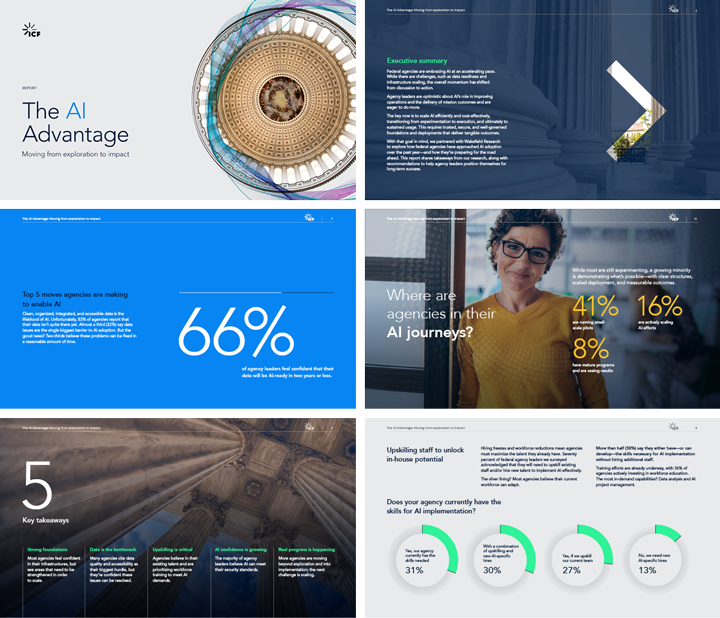
How product management can help you design excellent experiences
Passionate about creating excellent experiences, some federal agency leaders are turning to product management to supercharge digital delivery. Here’s what it is—and some things to keep in mind as you get started.
As federal agencies work to become more agile and improve digital experiences across the board, product management has emerged to build human-centered design and empathy into the digital delivery process. And it’s catching hold—a quick skim of the federal job boards shows that product managers are in demand.
Why the buzz? Delivering excellent, equitable, and secure federal services and customer experience is a priority that comes from the top, and it’s one that our federal clients have been focused on for years. But excellent experiences don’t just happen—they need to be designed in a deliberate manner. Unlike a traditional software build, where long periods of development without feedback are the norm, in product managed development, early iterations will fail fast and then be rebuilt in two-week increments. As user research and feedback marries up with development and testing (more on that here), each iteration becomes more successful than the last and, more importantly, mission focused.
While product management is a broad topic that can take on different flavors in different settings, it is always grounded in human-centered design and collaboration in an agile delivery context—which results in the enviable outcome of a superior customized solution that stakeholders have played a critical role in creating. Plus, there’s added value in not using the client as a beta tester at the very end, when it’s often too late to make significant changes, and in not forcing them to use an inadequate solution while tickets are being fixed.
The ultimate payoff, of course, is a dedicated mission-specific digital solution that can re-invent itself quickly to meet shifting demands.
Anatomy of a successful product management approach
If this sounds like a great idea to you (and it is), then, as experts in product management and digital modernization, we’re happy to share some key insights into what’s required to make it happen:
- Relationships are critical to success when incorporating product management into software development. It’s important for the people building the solution to have a strong rapport with the people using it and crafting those empathetic relationships may require a culture shift to achieve.
- Human-centered design (HCD) is relatively new to the public sector. However, it provides a vast opportunity for system integrators/contractors to visually demonstrate how user research can create better systems that will become adopted faster and used widely. Incorporating a human-centered design framework is considered a must-do.
- Communications best practices combined with collaboration and stakeholder management become critical when government and system integrators are both involved in product management (with many chefs in the kitchen, you’ll need a good plan in place and regular check-ins to stay on target). This will ensure that your strategic vision is executed properly, hand in hand, with SME involvement.
- Prioritizing and documentation are key methods to be highlighted and reinforced. Understanding what can be created quickly and what will require a longer process is vital while good documentation ensures knowledge can be transferred easily, when needed.
- Alignment around desired outcomes is crucial to ensure business and IT are working toward the same goals. Sometimes referred to as two-in-a-box leadership, this approach extends beyond a single metric or KPI to prioritize creating an environment of shared accountability and collaboration. But because you can’t manage what you don’t measure, determining key metrics is important—and if you can tie those metrics to value streams that cut across the organization, you'll make an even bigger impact.
Although the use of agile product management requires human-centered design, organizational/cultural change management, and a robust communications strategy, the returns are well worth the investment and, as more federal agencies adopt this new framework into their mission areas, we can assist at every step of the way so that leaders and their teams are fully prepared to make the shift.
We’re proud that we don’t offer cookie-cutter solutions and, as experts in low-code/no-code options, we always consider how we can empower others and allow our clients to upskill their employees and have more control over their digital solutions.
At ICF, it’s important for us to leave a legacy of trusted advice and effective digital solutions that users love.
